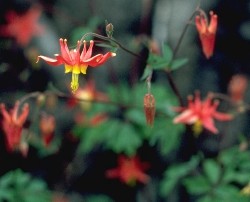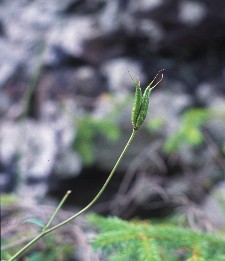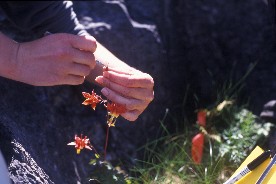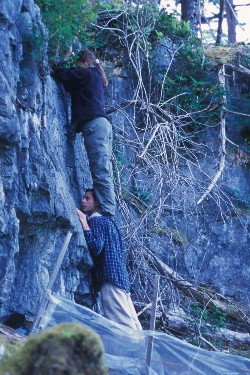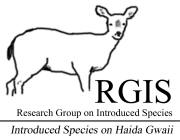

- Menu
- Home
- Haida Gwaii
- Introduced Species
- RGIS
- What did we learn?
- Research
- Publications
- RGIS symposium
- School curriculum
- Contacts
- English
- Français
Effect of browsing history on the vegetation
Effect of reducted plant abundance on pollination |
||||||
Aim & scope - Where & when - How - Main results and conclusions - Scientific Publications |
||||||
Aim and scope |
||||||
|
||||||
| return to top of page |
||||||
Where and when |
||||||
Diego
Vasquez and collaborators conducted pollination experiments in 2005 on 6
islands of
|
||||||
| return to top of page |
||||||
How |
||||||
Reproductive success (seed production) was compared between islands with and without deer. |
||||||
|
Comparison of pollination and reproductive success between islands with and without deer |
||||||
|
||||||
|
Reproductive
success can be affected by pollen availability or resource availability. Pollination can be pollinator-mediated pollination or self-pollination (the stigma of a flower is pollinated by pollen falling from the etamines of the same flower). |
||||||
Up to which extent does pollen availability determine reproductive success ? |
||||||
|
||||||
return to top of page |
||||||
Main Results and conclusions |
||||||
|
||||||
Scientific Publications |
||||||
|
||||||
return to top of page |
||||||

